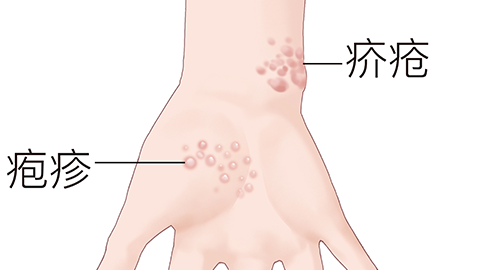What are the aftereffects of scabies?
Generally, scabies may leave sequelae such as skin pigmentation, scar formation, chronic itching, residual nodules of scabies on the scrotum, and other skin infection-related issues if treatment is delayed, care is inappropriate, or reinfection occurs. A detailed analysis is as follows:

1. Skin Pigmentation: The inflammatory response caused by scabies stimulates melanocytes, leading to pigmentation at the affected areas. This commonly occurs in regions where mites easily parasitize, such as between the fingers, wrists, armpits, and groin, presenting as brown or dark red patches. The depth of color is related to the severity of the inflammation.
2. Scar Formation: Some patients experience intense itching caused by scabies, leading to repeated scratching and skin damage or epidermal defects. If the injury involves the dermis, scars may form after healing. Mild cases may present as superficial, small scars, while severe cases may develop hypertrophic scars or pitted scars.
3. Chronic Itching: If scabies is not completely treated, residual mites or their excretions may continue to stimulate skin nerves, or the skin's nerve sensitivity may increase after the inflammation subsides, potentially causing chronic itching. The itching often worsens at night, is less severe than in the acute phase, and recurs frequently, which may interfere with sleep quality.
4. Residual Scabies Nodules on the Scrotum: Male patients are prone to develop scabies nodules on the scrotum. Even after the systemic symptoms of scabies have resolved, hardened nodules may remain in this area. These nodules are typically pea-sized, firm, pale red or skin-colored papules, accompanied by intermittent itching and slow resolution.
5. Skin Infection-related Issues: Skin damage caused by scratching can easily lead to secondary bacterial infections, such as folliculitis and impetigo. After the infection heals, in addition to possible pigmentation, the affected areas may develop rough skin, fine depressions, or punctate scars.
It is recommended to seek timely and standardized treatment upon the onset of scabies, avoid scratching, maintain skin cleanliness, and thoroughly disinfect personal items to prevent recurrence. If the aforementioned sequelae occur after treatment, local care and symptomatic medication can be used to improve the conditions and reduce their impact on daily life.





